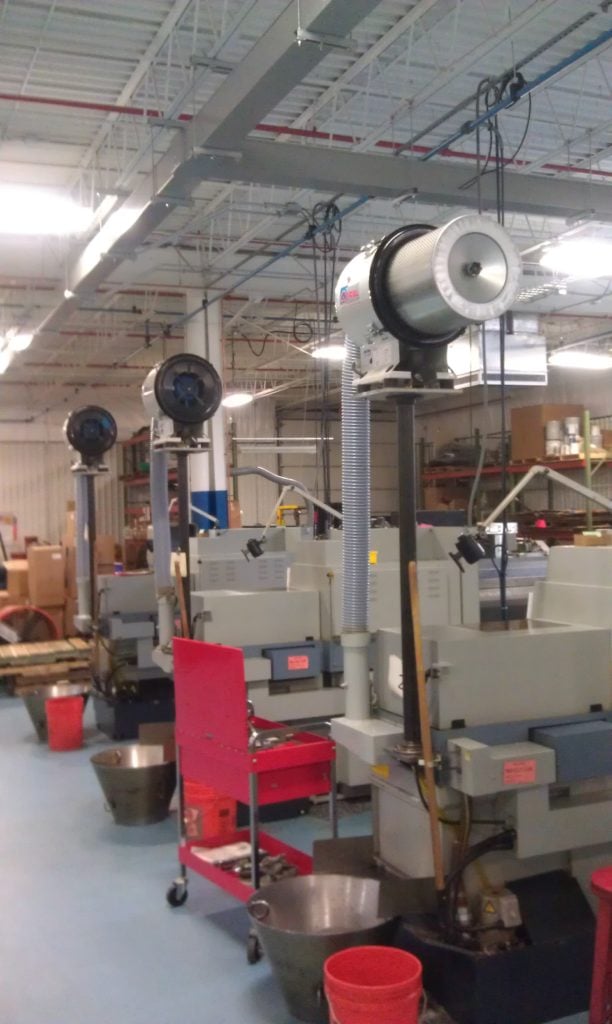How Mist Collectors Work and Why They’re Important
In industrial environments, maintaining clean air is crucial for the health and safety of workers, as well as the longevity of equipment. One significant challenge in many industries is the presence of oil mist, which can lead to a host of problems if not properly managed. This is where oil mist collectors come into play. In this comprehensive guide, we’ll explore the basics of oil mist collectors, how they work, and why they’re essential in industrial settings.

What is Oil Mist?
Oil mist consists of tiny droplets of oil suspended in the air, generated by various industrial machining processes such as turning, grinding, and milling. These processes use metalworking fluids for cooling and lubrication, which can become aerosolized, creating a mist. If not adequately controlled, oil mist can accumulate on surfaces, equipment, and in the air, posing several risks.
The Risks of Uncontrolled Oil Mist
Health Hazards: Prolonged exposure to oil mist can lead to respiratory issues, skin irritation, and other health problems for workers.
Safety Concerns: Accumulated oil mist on floors and equipment can create slippery surfaces, increasing the risk of slips and falls.
Equipment Damage: Oil mist can infiltrate machinery and electronics, leading to malfunction, corrosion, and reduced lifespan of equipment.
How Do Oil Mist Collectors Work?
Oil mist collectors are designed to capture and remove oil mist from the air, ensuring a safer and cleaner work environment. The operation of an oil mist collector generally involves the following steps:
Capture: The oil mist collector draws in contaminated air from the industrial process using a powerful fan or blower.
Filtration: The contaminated air passes through a series of filters designed to trap oil droplets.
Drainage: In some mist collectors, the collected oil is drained from the filters or collector plates and can often be recycled or disposed of safely.
Clean Air Discharge: The cleaned air is then discharged back into the workspace or exhausted outside, significantly reducing the concentration of oil mist in the environment.
Why Oil Mist Collectors are Important
Health and Safety: By removing oil mist from the air, oil mist collectors help protect workers from respiratory issues and skin irritation, while also reducing the risk of accidents due to slippery surfaces.
Regulatory Compliance: Many industries are subject to strict regulations regarding air quality and worker safety. Using oil mist collectors helps ensure compliance with these standards, avoiding potential fines and legal issues.
Improved Equipment Performance: Keeping oil mist out of machinery and electronics prevents damage and downtime, leading to improved performance and longer equipment lifespan.
Environmental Protection: By capturing and properly disposing of oil mist, companies can minimize their environmental footprint contributing to cleaner air.
Cost Savings: Investing in oil mist collectors can lead to significant cost savings over time by reducing health-related absenteeism, maintenance costs, and environmental impact.
Choosing the Right Oil Mist Collector
Selecting the appropriate oil mist collector for your facility depends on several factors, including the type and volume of mist generated, the size of the workspace, and specific industry requirements. Consulting with a professional supplier can help you determine the best solution for your needs. Contact our office today to speak with an experienced representative.
Oil mist collectors play a vital role in maintaining safe, healthy, and efficient industrial environments. By understanding how they work and the benefits they provide, companies can make informed decisions to protect their workers, equipment, and the environment. Investing in a quality oil mist collection system is not just a regulatory necessity but a commitment to workplace excellence and sustainability.